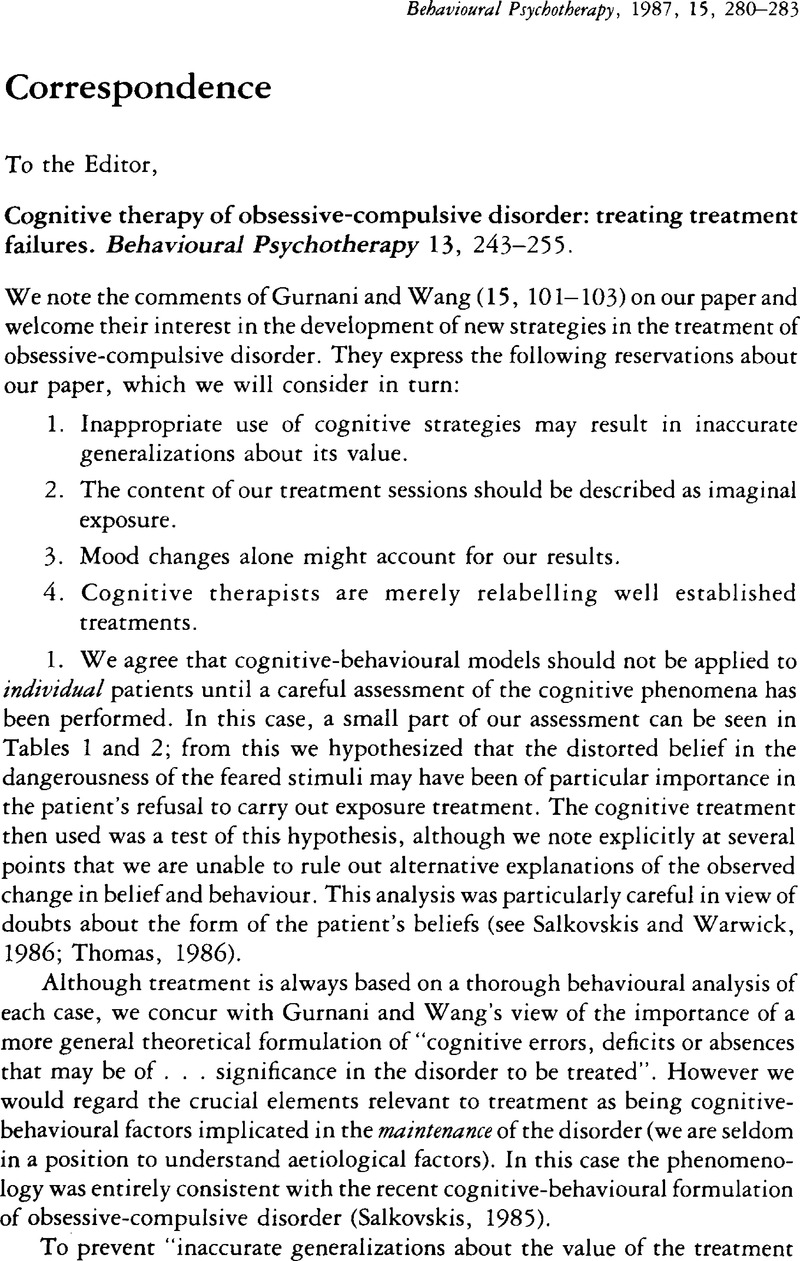No CrossRef data available.
Article contents
Correspondence
Published online by Cambridge University Press: 16 June 2009
Abstract
An abstract is not available for this content so a preview has been provided. As you have access to this content, a full PDF is available via the ‘Save PDF’ action button.

- Type
- Correspondence
- Information
- Copyright
- Copyright © British Association for Behavioural and Cognitive Psychotherapies 1987
References
Foa, E. B., Steketee, G., Grayson, J. B. and Doppelt, H. G. (1983). Treatment of obsessive-compulsives: when do we fail? In Failures in Behaviour Therapy, Foa, E. B. and Emmelkamp, P. M. G. (Eds), New York: Wiley.Google Scholar
James, J. E. (1986). Review of the relative efficacy of imaginal and in vivo flooding in the treatment of clinical fear Behavioural Psychotherapy 14, 183–191.Google Scholar
Salkovskis, P. M. (1984). Psychological research by NHS clinical psychologists: an analysis and some suggestions Bulletin of the British Psychological Society 37, 375–377.Google Scholar
Salkovskis, P. M. (1985). Obsessional-compulsive problems: a cognitive-behavioural analysis Behaviour Research and Therapy 23, 571–583.CrossRefGoogle ScholarPubMed
Salkovskis, P. M. (1986). The Cognitive revolution: new way forward, backward somersault or full circle Behavioural Psychotherapy 14, 278–282.CrossRefGoogle Scholar
Salkovskis, P. M. and Warwick, H. M. C. (1986). Behavioural Psychotherapy 14, 91–93.CrossRefGoogle Scholar





Comments
No Comments have been published for this article.